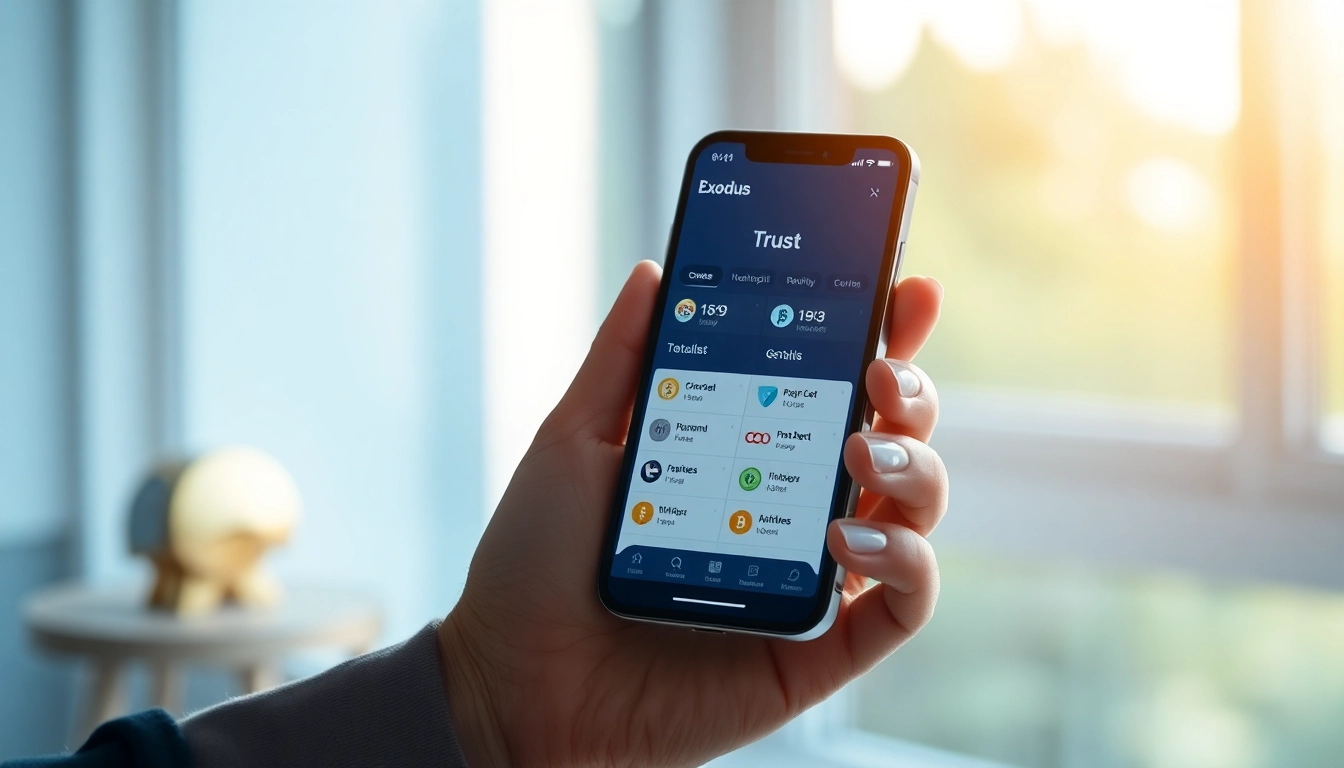The Ultimate Exodus Wallet Guide: 5 Key Benefits You Need to Know for 2024
Introduction to Exodus Wallet
The digital currency revolution has brought forth a multitude of wallets, with the exodus wallet standing out as a unique contender through its user-friendly interface and powerful features. This guide serves as an extensive resource for both newcomers and seasoned crypto enthusiasts to navigate the world of the Exodus Wallet, ensuring a comprehensive understanding of its functionalities and security protocols. By extracting insights from current trends and user experiences, we aim to equip you with the knowledge necessary to manage your crypto assets effectively.
What is the Exodus Wallet?
Exodus Wallet is a multi-currency, non-custodial cryptocurrency wallet developed to provide users with a seamless way to manage, send, and receive various digital currencies. Initially launched in 2016, it has become a favorite among crypto enthusiasts due to its intuitive design and robust features. Unlike custodial wallets that hold your private keys for you, Exodus allows you to maintain complete control over your holds, thereby enhancing your security.
Core Features of Exodus Wallet
- User-Friendly Interface: Exodus prides itself on an elegant, easy-to-navigate design, making it accessible to users with varying levels of cryptocurrency experience.
- Multi-Currency Support: Users can manage over 100 cryptocurrencies, including Bitcoin, Ethereum, and Litecoin.
- Built-In Exchange: Exodus features a built-in exchange allowing for instant swapping between currencies without the need for third-party platforms.
- Cross-Platform Compatibility: The wallet is available on desktop, mobile, and as a web application, facilitating access from various devices.
- Security Features: Includes backup functionalities, secure recovery options, and support for hardware wallets.
Understanding Cryptocurrency Wallets
Cryptocurrency wallets can be broadly classified into two categories: hot wallets and cold wallets. Hot wallets, like Exodus, are continuously connected to the internet, making them convenient for frequent transactions but potentially more vulnerable to hacking. Cold wallets, on the other hand, are offline storage options, providing enhanced security for long-term holdings. Understanding the distinctions between these wallet types is vital for users to make informed decisions about safeguarding their assets.
Setting Up Your Exodus Wallet
Downloading the Exodus Wallet App
To start using the Exodus Wallet, the first step is to download the application. It is available for Windows, macOS, and Linux on desktop, and for iOS and Android devices:
- Visit the official Exodus website or search for the app in your device’s app store.
- Click the download button and follow the installation instructions specific to your operating system.
Creating Your First Wallet
Once you have installed the application, creating your wallet is straightforward:
- Open the app and select “Create a New Wallet.”
- Choose a strong password to protect your wallet.
- Write down your 12-word recovery phrase, which is crucial for restoring access to your funds in case you forget your password.
Keep this recovery phrase secure and never share it with anyone.
How to Secure Your Exodus Wallet
Preserving the security of your Exodus Wallet is paramount. Here are some best practices:
- Enable Two-Factor Authentication (2FA): If using a service that supports 2FA, enable it to add an extra layer of security.
- Regular Backups: Take periodic backups of your wallet to ensure you do not lose access to your funds.
- Update the Application Regularly: Keep your wallet software up to date to safeguard against vulnerabilities.
Using the Exodus Wallet Effectively
Managing Your Cryptocurrency Portfolio
Exodus Wallet allows you to monitor your portfolio’s performance in real-time:
- Portfolio Overview: View your asset distribution and overall gains or losses.
- Price Tracking: Set price alerts and monitor market changes for active assets.
This feature empowers you to make informed decisions regarding your investment strategy.
Exchanging Cryptocurrencies within Exodus
Exodus integrates a built-in exchange feature enabling users to seamlessly swap cryptocurrencies. To exchange assets:
- Navigate to the “Exchange” tab in your wallet.
- Select the currency you want to exchange and the currency you want to receive.
- Enter the amount and confirm the transaction.
The exchange process typically incurs a fee, which is embedded within the exchange rates; be sure to review it before finalizing any trades.
Keeping Track of Transactions
Transaction history is vital for managing your crypto funds. Exodus allows you to:
- View all incoming and outgoing transactions with timestamps.
- Export transaction history for tax purposes or personal record-keeping.
Using these features can help you stay organized and compliant with local regulations.
Advanced Exodus Wallet Features
Integrating with Web3 Services
Exodus has evolved to support various Web3 functionalities, enabling users to:
- Connect with decentralized applications (dApps) directly from the wallet.
- Engage with various blockchains and participate in decentralized finance (DeFi) activities.
This integration provides a potent platform for maximizing your cryptocurrency investments.
Staking and Earning Rewards
Many coins, such as Tezos and Cosmos, offer staking options within Exodus, allowing users to earn passive income on their assets:
- Select the cryptocurrency eligible for staking.
- Choose the amount you wish to stake and confirm.
The rewards will accumulate over time in your wallet, contributing to your overall portfolio growth.
Pros and Cons of Exodus Wallet
While Exodus offers numerous benefits, it is essential to consider both the advantages and the disadvantages:
Pros:
- Intuitive interface and ease of use.
- Diverse asset support and built-in exchange features.
- Regular updates and developments, keeping the app relevant.
Cons:
- Does not offer native crypto-to-fiat exchanges.
- Fees can be higher compared to frequent trading platforms.
- As a hot wallet, it may be more vulnerable to online hacks.
Common Issues and Support
Troubleshooting Exodus Wallet Problems
Occasional issues may arise while using Exodus, such as transaction delays or difficulties in accessing the wallet. Common troubleshooting steps include:
- Restarting the app.
- Ensuring your device has an active internet connection.
- Checking the status of the respective cryptocurrency network.
Accessing Customer Support
Exodus provides a robust support system through its Knowledge Base, wherein users can find answers to frequently asked questions, tutorials, and other helpful articles. For unresolved issues, you can reach out through their support feature available directly in the app.
Frequently Asked Questions About Exodus Wallet
- Is Exodus a safe wallet? Yes, Exodus incorporates several security measures, including encryption and backup options, but remember that users must take personal responsibility for their security.
- What fees should I expect? Exodus integrates fees into its services, and while they do not charge for wallet downloads, fees for transactions and exchanges can vary.
- Can I recover my wallet? Yes, as long as you have your recovery phrase, you can restore your wallet on any supported device.










Post Comment